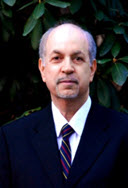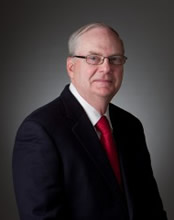True or False:
- Our normal body temperature is 98.6 degrees F.
- Flowers know to bloom when it grows warm.
- Everyone needs a good eight hours' sleep.
- Early to bed, early to rise, makes a man healthy, wealthy and wise.
- Everyone has a 24-hour sleep-wakefulness cycle.
Answers:
- False. 98.6 degrees F is only an average. Our body temperature varies by about 1.5 degrees throughout the day.
- False. Flowers know when to bloom by measuring changes in the amount of daylight.
- False. Eight hour's sleep is a crude rule-of-thumb. Some people need 10 or 11; Thomas Edison required only two (though he may have taken naps).
- False. "Night people" cannot rise early because they cannot fall asleep early. For bus-driving "owls," Ben Franklin's limerick is a formula for carnage.
- False. When isolated from the cues which regulate sleep and wakefulness (light-dark pattern, social interaction, etc.), the average cycle is actually longer than 24 hours.
Many of our fundamental and commonly-held beliefs are invalid because they were derived, often haphazardly, from a blur of intuition, superstition, history, tradition and circumstance rarely subjected to scientific scrutiny. Before the inventions of artificial light and mechanical clocks, being awake during daylight and asleep during darkness were survival necessities - lest one be devoured by predators or stumble into a pit. But even then, orientation around solar cycles at the exclusion of all others was hardly universal: Both the Hebrew calendar and that of many Native American tribes is lunar - and still are today. The point is that many of our misconceptions are
modern. Yet we have relied on them
for safety.
In the context of such misconceptions, the motorcoach industry's safety record is stunning - a testament to excellence in a range of activities we have undertaken to protect our drivers and our passengers despite their basis in scientific and medical blasphemy. The better news is that, if we can achieve this record in a framework of mythology and misunderstanding, imagine how we can perform in an environment consistent with modern science and medicine!
This irony lies at the heart of a growing feeling - validated in recent years in railroad and trucking circles - that better times are coming for our drivers, our customers, our passengers, our regulatory agencies, our scheduling, our marketing, our insurance carriers, our recruitment and retention, and our profits. Better, better, better, better, better, better, better, better, better. Knowing these benefits are within reach is cause for celebration.
Why We Sleep
Our body temperate rises and falls in one complete cycle every day, rising above and dipping below the average once each cycle. While the "pitch" of this curve is roughly 24 hours, its "amplitude" is roughly a degree and a half. More importantly, while our temperatures fall after we are asleep (until roughly the mid-point of a full sleep cycle), we fall asleep essentially because our body temperatures begin to drop. This cause-and-effect relationship is critical to an understanding of fatigue and efforts to manage it.
Figure 1 below depicts the variation in body temperature for a typical morning-person ("lark") and a typical night-person ("owl"). Note that while the curves are similar, the lark's curve rises and falls before that of the owl's. This means that their daily peaks and valleys of alertness occur at different times of the day. Larks are generally more alert during the morning hours, when many owls are fuzzy. Conversely, owls are generally more productive during the late night hours, when larks begin to fade.
Respecting or indulging these cycles in the workplace effectively involves matching work shifts to the hours when workers are most alert, and avoiding those hours when they are least alert. The green and red portions of Figure 2 below depict these hours, respectively, for larks, and in Figure 3, for owls. Because we typically need six to nine hours' sleep, pairing the right lark with the right owl -- under the right conditions -- can create a team capable of driving safely around-the-clock. Similarly, any hours-based organizational or regulatory framework can only work optimally if it takes into account the specific characteristics of each individual driver - not to mention a spectrum of other variables which influence fatigue and alertness, much less over a span of consecutive days. One curiosity of circadian rhythms is that the deviation from a rigid 24-hour cycle increases as organisms move up the evolutionary scale. In terms of motorcoach safety, the fact that our passengers are not freight is not nearly as important as the fact that our drivers are not insects.
It is also worth mentioning that one cannot generally alter his or her sleep-wakefulness cycle very much overnight. This is simply because one cannot change his or her body temperature rhythm overnight. The delayed reaction of one's body temperature to forced changes in sleep and wakefulness contributes to the symptom we commonly refer to as jet lag. Effecting these changes not only requires several days (depending on the individual and the number of hours involved), but the changes must be reinforced. While one may force wakefulness through stimulants, and induce sleep through sheer exhaustion, his or her levels of sleep and alertness cannot mirror them, since the latter are reflective of body temperature.
There are also limits to the length one's sleep-wakefulness cycle can be modified. The U.S. Navy discovered these limits the hard way: To increase levels of alertness, it once tried to entrain sailors to a six-hour day: Two hours' watch, two hours' recreation and two hours' sleep. The sailors' functioning in all three areas quickly unraveled as their ships collided with buoys, icebergs and flotsam.
Defining the Edges
Statistics may deceive, but they rarely lie. The motorcoach industry could not have achieved the safety record it obviously has if the bulk of its drivers were continuously exhausted. Of course, it would not take widespread exhaustion to yield an unacceptable number of accidents. It would only take exhaustion "around the edges." Defining these edges is a central purpose of the study currently being undertaken by the FMCSA. Acknowledging the deviations in motorcoach service should not invoke alarm: There are plenty of drivers who can operate most any reasonable duty cycle at heightened levels of alertness. Matching them up is a primary objective of performance-based scheduling and bio-sensitive driver assignment.
It is also obvious that performing below the threshold of complete exhaustion is hardly a sound criterion for operating a 20-ton vehicle often moving at high speeds, often at night, often in inclement weather, often on bad roads, and often filled with three-score of loud adolescents rebelling against authority. Alertness and fatigue may be antonyms, but they are not long-lasting states of consciousness. In contrast, they occur in degrees. While no work has been done to measure and correlate degrees of alertness and fatigue with bus accidents, a quick glance at Figures 1 through 3 above demonstrates how significantly these states vary throughout the day. One objective of performance-based scheduling is to keep drivers behind the wheel when their body temperatures lie above the average. But another is to target one's shift to his or her highest level of alertness. Because so many variables, both internal (e.g., post-lunch dip and napping capabilities) and external (lighting, traffic, speed, duration, monotony, etc.), affect alertness and fatigue, achieving this latter objective is more difficult than simply avoiding the sleep-friendly extremes. Fortunately, we have the twin tools of knowledge and technology at our disposal.
Relief, Rewards and Horizons
The more one examines the rigors of motorcoach service against its operating environment, the more one is impressed by the skill, courage and durability of its drivers. Driving a motorcoach is a difficult job no matter how well runs are designed, staffed, managed and monitored. And there is room aplenty for kudos throughout the motorcoach planning and management hierarchy. Factoring in duty cycles and operating environments, one finds evidence confirming what many of us have known for years: Driving a motorcoach is, both physically and mentally, equally or more demanding than flying a commercial airplane, piloting a ship, or motoring a locomotive. Our drivers are not merely skilled. They are tough.
Matching motorcoach work shifts to our bodies' capabilities is a challenge clearly within reach. From every perspective, these are welcome changes: Digging in hard and long when your body feels like it. More breaks and rests when it does not. Working when you want, not when you must. Being alert while awake, sleeping soundly when tired - both at work and away from it. Getting in a groove rather than a rut. These are formulas for jobs most people actually want. And they are the profiles of individuals to whom our passengers would like to "leave the driving."
To motorcoach drivers who have fended off the sirens of sleep, the difference between driving tired versus rested is not just a safety issue. It is a quality-of-work and quality-of-life issue. For tired drivers, motorcoach service is a weigh-station along the route to another job. This hardly belies dedication. In contrast, it reflects self-preservation and common sense. These are qualities of the drivers we want. If we make driving a better experience, these are the drivers we shall have.










